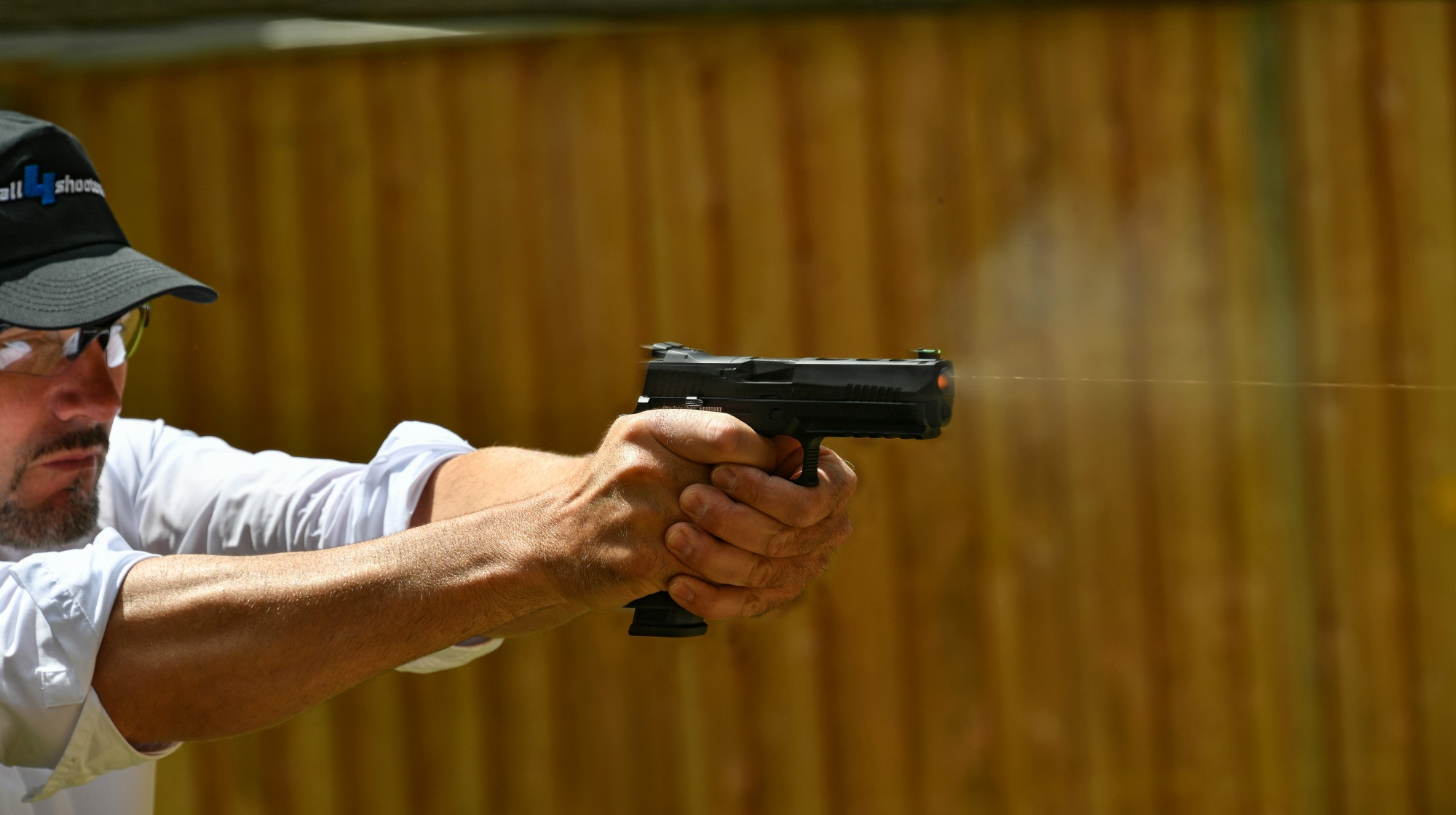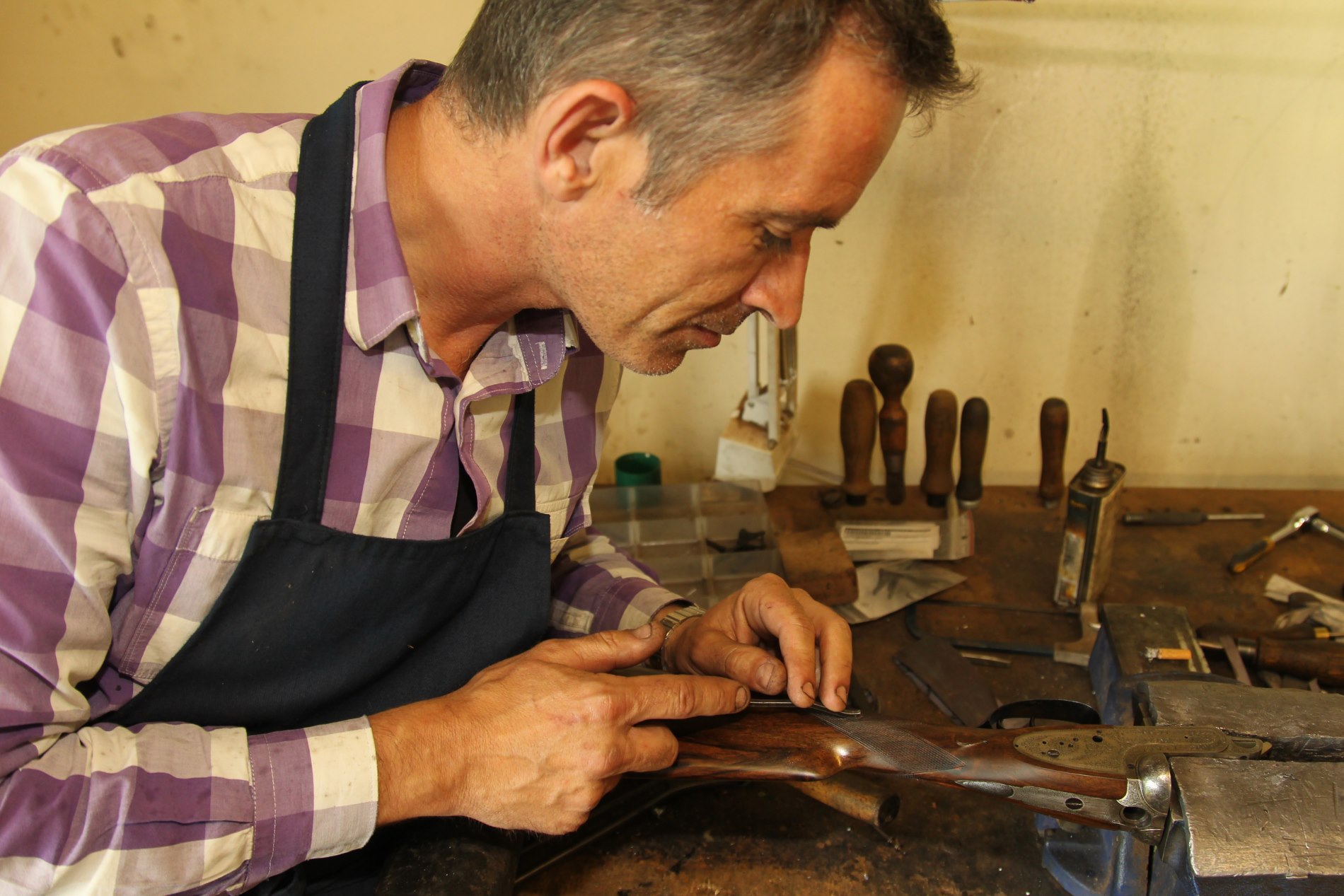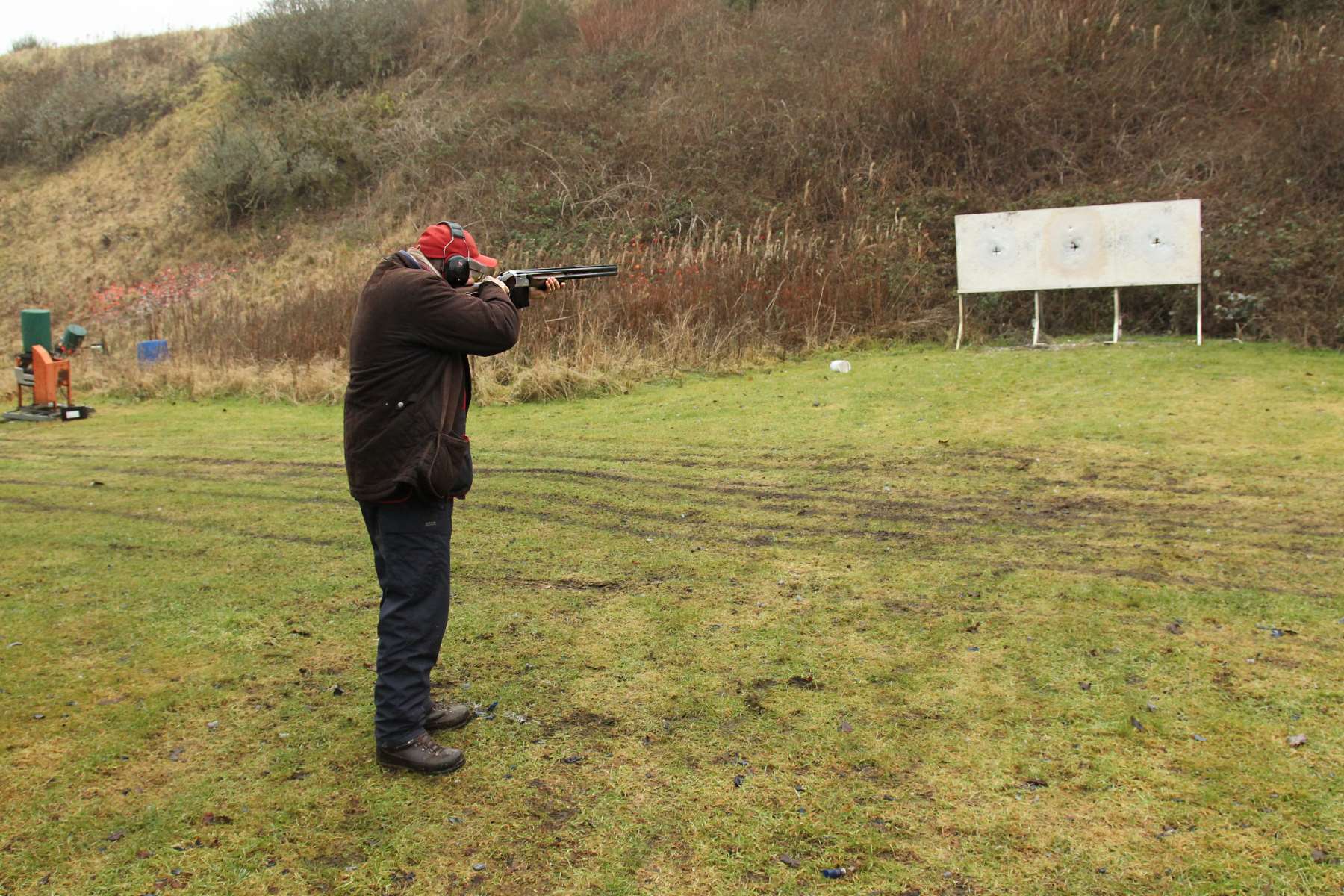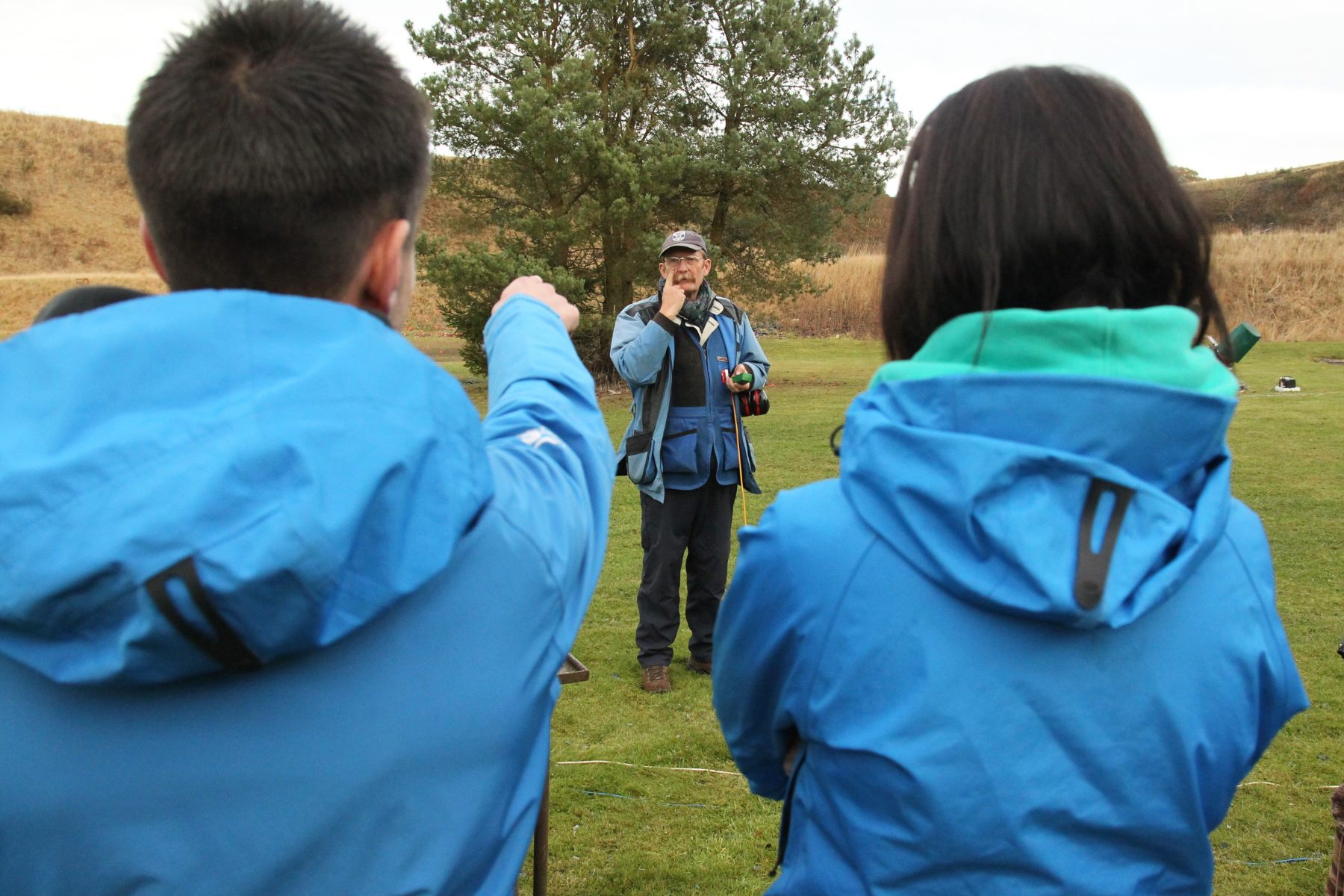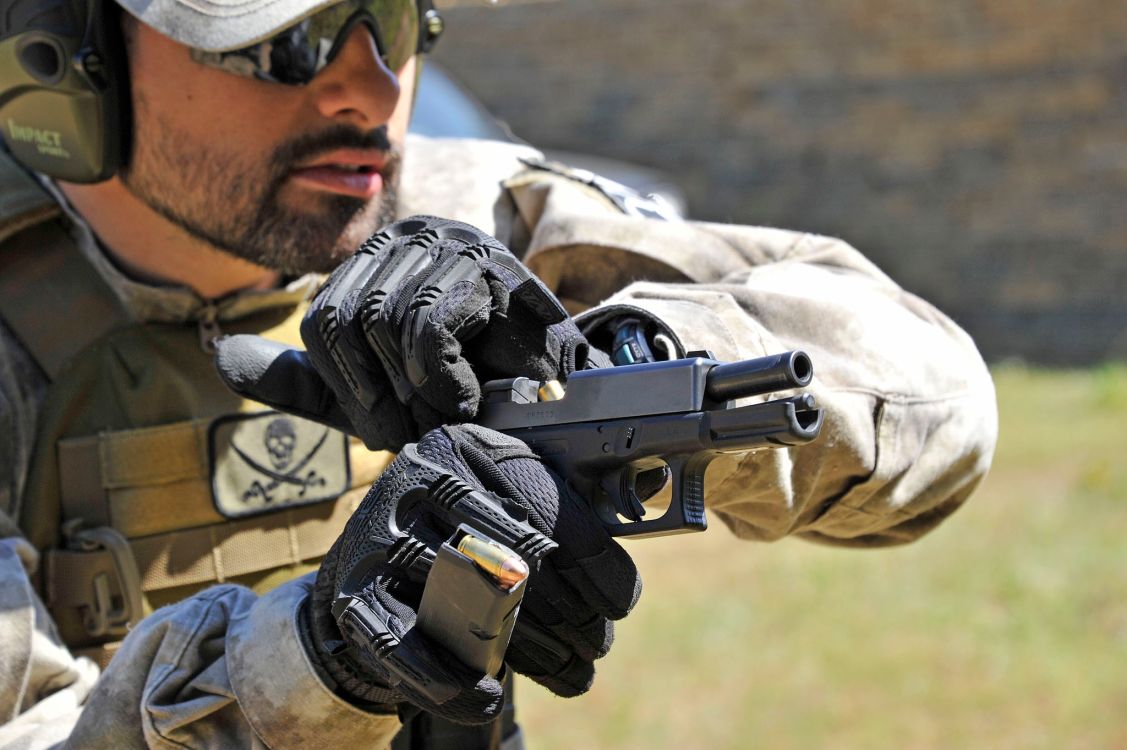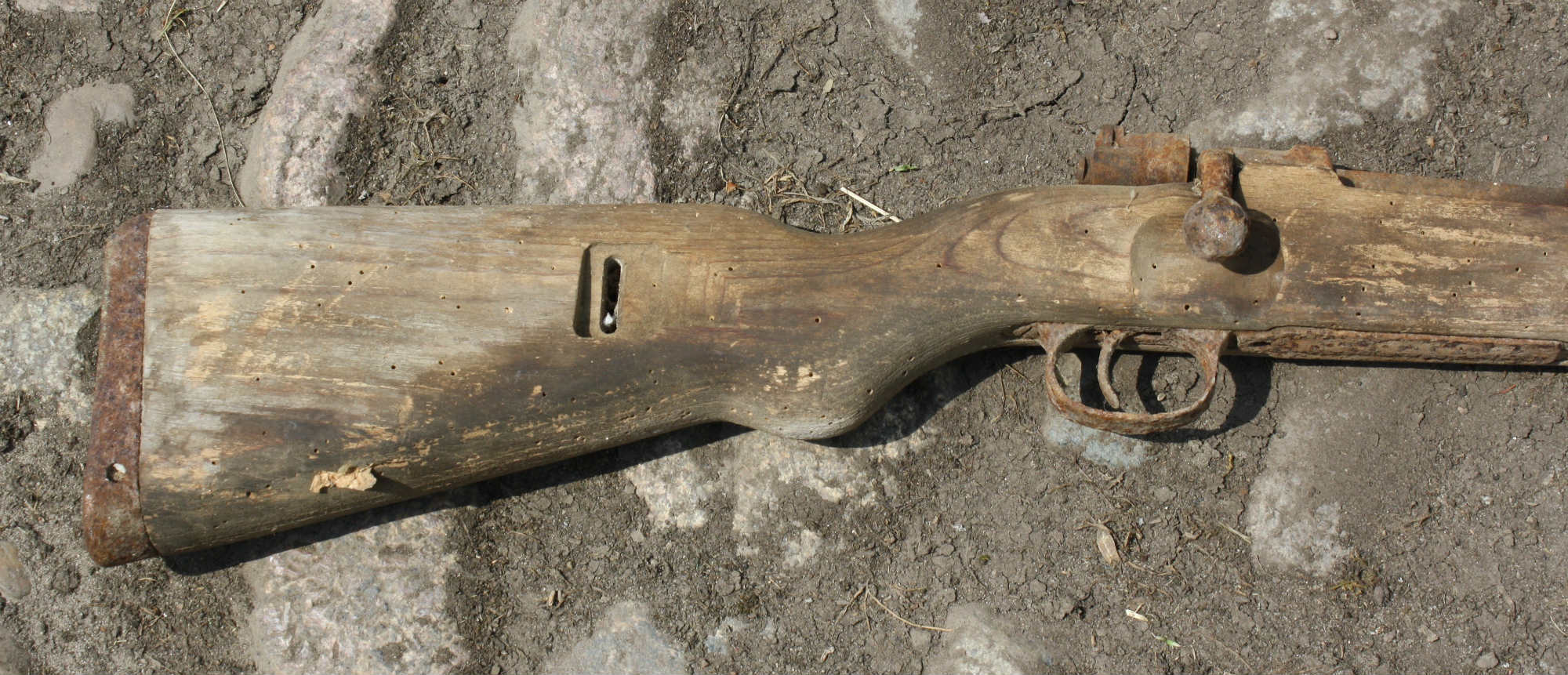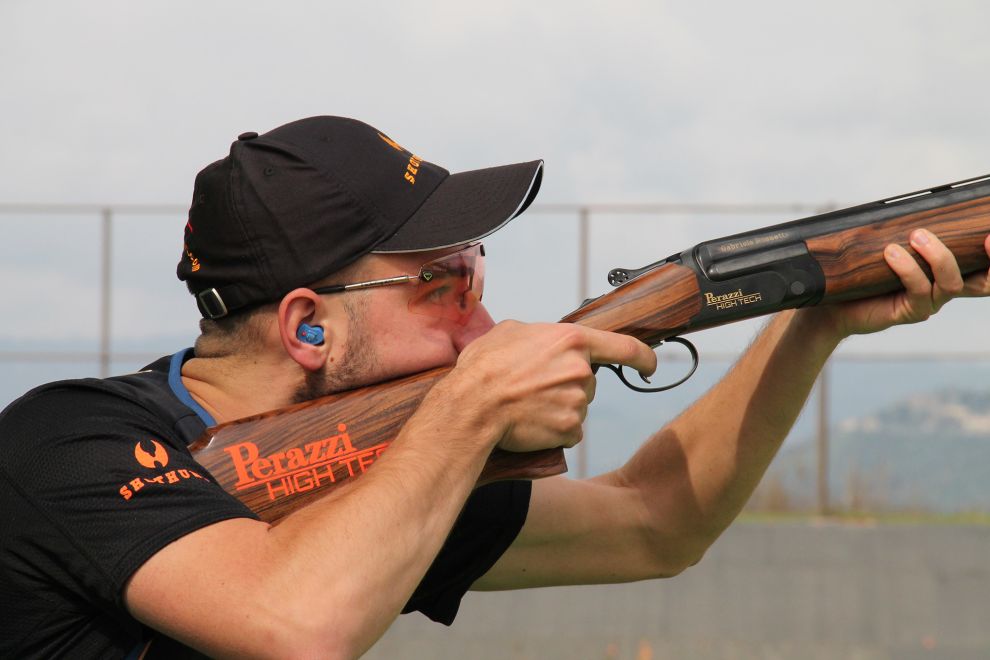Article also available in other languages
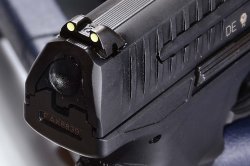
In our previous article, we talked about how important aiming devices are in precision shooting. Handguns come with various aiming devices.
The simplest ones are either built in to the gun’s structure or mounted in special dovetail-shaped indents.
Some devices are fixed while others can be adjustable for windage and elevation. Usually, in order to avoid possible reflections, aiming devices are made matte by various processes, and the most sophisticated ones may have a checkered backside, which increases anti-reflection function. Furthermore, aiming sights can have an indented backside and in some cases tend to be inclined towards the base. Some aiming front and back sights come in light colors, which should help you speed up the target acquisition.
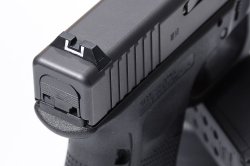
Colored reference points on the aiming sights, dot, square, or white outline, can be simply painted in white; some use optical fibers, others are colored with phosphorus luminescent substances while the most expensive sights feature small self-luminous ampoules of tritium, which is a radioactive isotope of hydrogen.
If we look at the shooting distance statistics of self defense cases, we see that most confrontations happen at less than three meters, with 80% of shootings occurring at less than one meter of distance; when we add the stress of a combat, the aiming devices and their luminous reference points may seem superfluous. Furthermore, in defense situations, the skill of precision shooting could be of little use since the distances tend to be reduced, and within one meter of distance, even someone that never shot a gun before may easily hit the target.
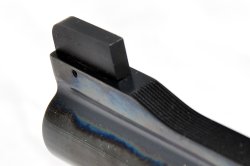
Let’s see what happens when we use normal aiming devices, with colored or luminescent reference points in different situations. When we practice at an open shooting range, under the roofing, in the shadow, we point the gun towards the target, which is very well illuminated and visible.
In this case, the backlight makes it difficult to see the white reference points. Those who are interested in precision shooting are advantaged if, instead of using white dots they may or may not be able to see, they observe the lateral lights created when the front sight is put in the center of the rear sight notch. This is why precision guns have completely black aiming devices.
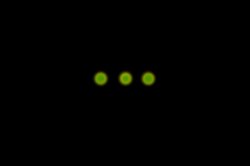
The small inserts of optical fiber allow a much faster acquisition using your aiming devices. Especially when, due to different visual issues, you cannot see the aiming devices sharpely enough. They are less efficient when there is not enough natural lighting.
The luminescent phosphorous reference points have a dubious function. With enough lighting they work just like the normal dots painted on the sights, but in the dark, after a while they need to be recharged by a luminous source.
The same goes for tritium sights – in good lighting conditions nothing changes, but under very dim lights they can’t be used until we are certain we can identify the target. In the dark we can see the sights but we don’t know in which direction to point them. An important safety rule says – make sure you identify your target correctly.
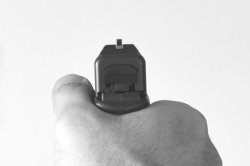
Let’s examine the distances in shooting conflicts and techniques that can be used in these conditions. As usually, we can rely on the statistics. You can’t translate your trainings at the shooting range to the reality.
Your adversary is not a still and passive object as a paper target (since, as we all know, paper targets do not usually shoot back...), and you cannot study a preventive plan – nothing happens when you're ready, in the best conditions, as at the reange. No aggressor is as thoughtful to reveal their bad intentions. No villain attacks from afar. It has been statistically proved that, not only those armed with bats, knives or their bare hands – so those who have to get close to you in order to hurt you – but also those armed with guns try to get as close as possible, to make up for poor shooting skills since they acquired the gun shortly before, for example.
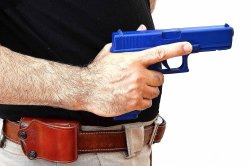
Everything depends on the enemy’s distance, remembering that the smaller the distance begtween us and our foe, the least our shooting skills help.
The aggression is sudden and very violent, and there is no Range Officer asking: “Shooter are you ready?”
The enemy is usually so close during the aggression that often we cannot even straighten our forearm to point the gun, while our weaker hand usually needs to contrast the opponent to keep our distance. So forget shooting with both hands. Even if you manage to extract your gun pulling away your clothes fast enough, the aiming devices are useless with an opponent so close by, since the gun must stay at your hips height, so that your opponent can’t take it away.
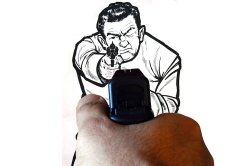
If the distance between us and the opponent increases, (let’s say about 7 meters or 7.6 yards) you need to point the gun towards the target extending your arm, trying to see the front sight but without wasting too much time on focusing perfectly the aiming devices. Intense training helps you to point the gun as if it was a part of your arm, towards the torso of the opponent.
The technique is called Flash Sight Picture. Massad Ayoob has developed another very quick aiming technique: The front sight is not aligned with the rear sight but it is slightly higher. Often, we need to accept seeing the tip of our barrel or slide. When we consider stressful situations, it is difficult to see small objects, which is why it is difficult to use aiming devices. This is why it is even more difficult to see the tiny dots, no matter how they are made.
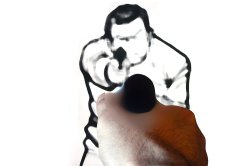
It is completely true that a perfect alignment of the aiming sights, but also correct pressure on the trigger, make the shots go in correct directions but we cannot stop and get a good aim because, other than hormonal issues caused by stress, is has been proved that the distance of 7 meters requires only 1,5 seconds for our opponent to reach us and get in physical contact.
If we consider this time, and the time our brain needs to understand that our life is in danger, extract the gun and point it towards our aggressor, those tenths of seconds we have left are quickly diminishing.
So each fraction of a second is precious, which is why you should also reconsider the rule of not carrying a gun with a round in the chamber, as it could take even more of your already scarce time.
In any case, it is good to have excellent shooting skills, increasing your precision shooting, since, even if the statistics suggest that the confrontations happen usually at an arm’s length, you never know when you’ll have a more distant opponent.



